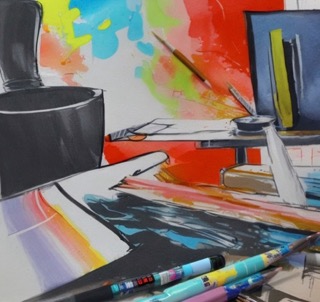Researchers at POSTECH have created an injectable adhesive hydrogel that uses harmless visible light to promote both bone regeneration and adhesion, offering an innovative alternative to traditional bone graft treatments.
Scientists from the Pohang University of Science and Technology (POSTECH) have made a significant advancement in bone regeneration technology. Led by Hyung Joon Cha, a professor in the Department of Chemical Engineering, the research team has developed an innovative injectable adhesive hydrogel that uses visible light to achieve both bone regeneration and adhesion.
Bone defects, resulting from trauma, infection or congenital abnormalities, are becoming more prevalent in aging societies. Conventional treatments often require a combination of bone grafts, serum or bioadhesives to fill the defect. However, these methods face challenges such as difficulty maintaining shape within the body and limited adhesive strength. Traditional methods using bone grafts combined with adhesive materials have often failed to achieve simultaneous “bone regeneration” and “adhesion.”
The new hydrogel developed by the POSTECH team addresses these shortcomings. Utilizing visible light — harmless to human tissue — the hydrogel facilitates cross-linking and mineralization simultaneously. Cross-linking enables the main components of the hydrogel to bond and harden, while mineralization allows the formation of bone-building minerals like calcium and phosphate within the system, eliminating the need for separate bone grafts or adhesive materials.
The hydrogel precursor consists of natural polysaccharides derived from brown algae (alginate), mussel adhesive protein containing RGD peptides, calcium ions, phosphonodiols and a photoinitiator. This unique formulation ensures that the hydrogel retains shape and position in the body after injection. Upon exposure to visible light, cross-linking and the formation of amorphous calcium phosphate occur, promoting effective bone regeneration and strong adhesion.
In animal model experiments involving femoral bone defects, the new hydrogel demonstrated successful injection and adherence, delivering the necessary components for bone tissue regeneration efficiently.
Cha asserted the potential impact of this innovation.
“The injectable hydrogel system for bone regeneration developed by our research team represents an innovative alternative to conventional complex treatments for bone diseases and will greatly advance bone tissue regeneration technology,” he said in a news release.
As the aging population grows, the need for effective and less invasive treatments for bone defects increases, making this breakthrough particularly significant.
The study, published in the journal Biomaterials, could pave the way for more effective, less invasive bone regeneration treatments in clinical settings.

